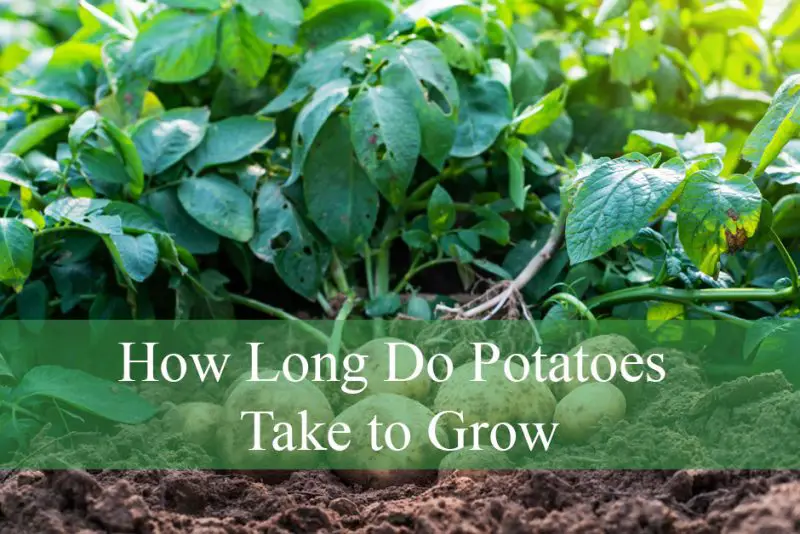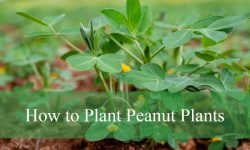Growing potatoes from seed potatoes to harvest is an exciting and rewarding gardening experience. These versatile vegetables are easy to cultivate, and with proper care, they produce abundant, flavorful tubers. Understanding how long potatoes take to grow from seed to harvest helps you plan your planting schedule and ensures you harvest them at the perfect time for the best taste and storage quality.
The time it takes for potatoes to grow varies depending on the variety, soil conditions, and climate. Early, mid-season, and late-season potatoes all have different timelines from planting to harvest. By knowing these differences, you can choose the right variety for your needs and enjoy fresh potatoes throughout the growing season.
Potato Growth Stages from Seed to Harvest

The journey from planting seed potatoes to harvesting mature tubers goes through several key stages. The first stage is sprouting, which begins once you plant seed potatoes in loose, well-drained soil. Shoots emerge from the “eyes” of the seed potatoes within two to three weeks, depending on soil temperature.
Next is vegetative growth, where the plant produces leaves and roots. This stage usually lasts three to four weeks and is critical because healthy foliage provides the energy needed for tuber formation through photosynthesis. Consistent watering and nutrient-rich soil are essential during this time.
The final stage is tuber development and maturation. Tubers begin forming shortly after flowering starts, with significant growth occurring underground over four to eight weeks. Once the foliage begins to yellow and die back, the tubers have reached full maturity and are ready for harvest.
How Long Early Potatoes Take from Seed to Harvest
Early potato varieties are the quickest to mature, making them perfect for gardeners eager for a fast harvest. These potatoes are generally ready to harvest about 70 to 90 days after planting. Because of their shorter growing period, they produce smaller, tender tubers with a delicate flavor.
Planting early potatoes as soon as the soil warms in spring allows you to enjoy a fresh crop by early summer. Many gardeners also use early potatoes as a first crop before planting a second batch of mid-season or late-season varieties. Varieties like ‘Swift’ and ‘Rocket’ are popular choices for quick, reliable results.
For the best early harvest, keep the soil evenly moist and ensure the plants get at least six hours of sunlight daily. Harvest them gently when flowers appear and the skins are still thin for the best flavor.
How Long Mid-Season Potatoes Take from Seed to Harvest
Mid-season potatoes are a great choice for gardeners who want a balance between speed and yield. These varieties typically take 90 to 110 days from planting seed potatoes to harvesting mature tubers. They produce medium to large tubers with a firmer texture, making them ideal for cooking and short-term storage.
Planting mid-season potatoes in mid-spring gives them enough time to develop strong roots and large tubers before the heat of summer. Varieties such as ‘Yukon Gold’ and ‘Kennebec’ are known for their excellent flavor and versatility in the kitchen.
Proper fertilization during tuber formation is essential for maximizing yield. Keeping the plants well-watered, especially during the bulking stage, ensures larger, healthier tubers by harvest time.
How Long Late-Season Potatoes Take from Seed to Harvest
Late-season potato varieties take the longest to mature but produce the biggest yields and best storage potatoes. These varieties generally need 110 to 135 days from planting to harvest. Their longer growing season allows tubers to develop thicker skins, making them ideal for long-term storage.
Planting late-season potatoes in early spring ensures they have enough time to mature before the first fall frost. Popular varieties such as ‘Russet Burbank’ and ‘Katahdin’ are perfect for baking, frying, and storing through the winter.
Because late-season potatoes stay in the soil longer, regular hilling and consistent watering are essential to encourage deep tuber development. Patience is key, but the large, starchy potatoes you harvest are worth the wait.
Factors That Affect Potato Growing Time
Several factors influence how long potatoes take to grow from seed to harvest. Soil temperature is one of the most important. Potatoes grow best when soil temperatures are between 60 and 70 degrees Fahrenheit. Cooler soils slow sprouting and early growth, while excessively hot conditions can stress the plant and reduce tuber size.
Watering consistency also plays a big role. Potatoes need evenly moist soil, especially during the tuber bulking stage. Overwatering can lead to rot, while underwatering can result in small or misshapen tubers. Nutrient-rich soil with enough potassium and phosphorus is also critical for strong plant growth and healthy tubers.
Pests and diseases, such as blight or aphid infestations, can shorten the growing season by damaging foliage. Protecting plants with proper spacing, crop rotation, and pest management ensures healthy growth throughout the season.
When to Harvest Potatoes for the Best Quality
Harvest timing depends on the variety and your intended use. Early potatoes are typically harvested when plants begin flowering, producing small, tender new potatoes with thin skins. Mid-season and late-season potatoes should remain in the ground until the foliage naturally yellows and dies back, allowing the skins to thicken for better storage.
For storage potatoes, leave them in the soil for an extra two weeks after the tops die back. Carefully dig them out with a garden fork to avoid bruising. Let the potatoes cure in a cool, dry, and shaded area for a few days to toughen the skins before storing them in a cool, dark place.
Tips to Speed Up Growth from Seed to Harvest
If you want to shorten the time from planting to harvest, pre-sprouting seed potatoes before planting is a simple and effective method. Place them in a cool, bright spot until short, sturdy shoots develop, giving them a head start.
Warming the soil before planting, especially in cooler climates, also speeds up growth. Many gardeners use black plastic or row covers to help retain soil warmth. Regular hilling to cover developing tubers, consistent watering, and balanced fertilization all contribute to faster, healthier growth.
FAQs About How Long Potatoes Take to Grow from Seed to Harvest
How Long Does It Take for Potatoes to Sprout After Planting Seed Potatoes?
Potatoes typically sprout within 2 to 3 weeks after planting seed potatoes, depending on soil temperature and moisture.
Can I Harvest New Potatoes Before Full Maturity?
Yes, new or baby potatoes can be harvested about 70 days after planting, usually when the plants start flowering. These are tender but should be eaten quickly as they have thin skins.
What Is the Average Time from Seed Potato Planting to Harvest?
Depending on the variety, potatoes take between 70 and 135 days from planting seed potatoes to harvest. Early varieties mature faster, while late-season types take longer.
Does Soil Temperature Affect Potato Growth Speed?
Absolutely. Optimal soil temperatures for potato growth are between 60°F and 70°F. Cooler soil delays sprouting, while excessive heat can stress plants and reduce tuber size.
How Can I Reduce the Time from Planting to Harvest?
Pre-sprouting seed potatoes, warming the soil before planting, maintaining consistent watering, and applying balanced fertilization can speed up potato growth and shorten the time to harvest.
Conclusion
So, how long do potatoes take to grow from seed to harvest? The answer depends on the variety, but most potatoes are ready within 70 to 135 days. Early potatoes provide quick rewards in about 70 to 90 days, mid-season varieties need 90 to 110 days, and late-season types take up to 135 days to reach full maturity. By choosing the right variety, preparing the soil properly, and giving consistent care, you can enjoy a bountiful harvest of fresh, flavorful potatoes straight from your garden.






